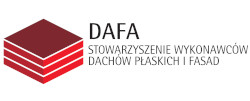New standardization arrangements in building acoustics
dr inż. Elżbieta Nowicka, Instytut Techniki Budowlanej; Zakład Fizyki Cieplnej, Akustyki i Środowiska
ORCID: 0000-0002-7993-8215
Adres do korespondencji: Ten adres pocztowy jest chroniony przed spamowaniem. Aby go zobaczyć, konieczne jest włączenie w przeglądarce obsługi JavaScript.
DOI: 10.15199/33.2020.08.03
Artykuł przeglądowy
Streszczenie. Podstawowym celem normalizacji dotyczącej akustyki budowlanej jest stworzenie warunków do spełnienia wymagania podstawowego nr 5 „Ochrona przed hałasem” zawartego w Rozporządzeniu Parlamentu Europejskiego nr 305/2011 dotyczącego wyrobów budowlanych oraz w polskim Prawie budowlanym. Poziom wymagań akustycznych dotyczących budynków i środowiska zewnętrznego jest określany przez poszczególne państwa. Parametry oceny oraz metody ich wyznaczania są normalizowane na poziomie ogólnoświatowym lub europejskim, w ramach prac Komitetów Normalizacyjnych ISO/TC 43/SC 2 „Akustyka Budowlana” i CEN/TC 126 „Właściwości akustyczne wyrobów budowlanych i budynków”. Wdrożeniem norm EN/ISO do normalizacji polskiej zajmuje się Komitet Techniczny PKN nr 253 „Akustyka Architektoniczna”, który współpracuje z wymienionymi Komitetami.
Słowa kluczowe: normalizacja; akustyka budowlana; ochrona przed hałasem; badania akustyczne.
Abstract. The basic aimof standardization in the field of building acoustics is to create the conditions tomeet the basic requirement No. 5 "Noise protection" contained in the European Parliament Regulation 305/2011 on construction products and in the Polish Construction Law. The level of acoustic requirements for buildings and the external environment is determined by the individual countries. The evaluation parameters and methods of their designation are normalized at global or European level, within the framework of the work of the ISO/TC 43/SC2 "Building Acoustics" and CEN/TC 126 "Acoustic properties of building products and of buildings". Implementation of the EN/ISO norms for Polish standardization is dealt with by PKN Technical Committee No. 253 "Architectural Acoustics", which co-operates with the aforementioned Committees.
Keywords: standardization; building acoustics; protection against noise; acoustical testing.
Literatura
[1] EN 12354 Building acoustics – Estimation of acoustic performance of buildings from the performance of elements.
[2] EN 14366 Laboratory measurement of noise from waste water installations.
[3] EN 15657Acoustic properties of building elements and of buildings – Laboratory measurement of structure-borne sound from building service equipment for all installation conditions
[4] EN 1793-1 Road traffic noise reducing devices – test method for determining the acoustic performance – Part 1. Intrinsic characteristics of sound absorption.
[5] EN ISO 10140 Laboratory measurements of sound insulation of building elements.
[6] ISO 10848-1 Acoustics – Laboratory and field measurement of flanking transmission for airborne, impact and building service equipment sound between adjoining rooms – Part 1: Frame document.
[7] ISO 23351-1 Acoustics – Measurement of speech level reduction of furniture ensembles and enclosures – Part 1: Laboratory method.
[8] ISO 12999-2 Acoustics – Determination and application of measurement uncertainties in building acoustics —Part 2: Sound absorption.
[9] ISO 23591 Acoustic quality criteria for music rehearsal rooms and spaces.
[10] ISO 354Acoustics –Measurement of sound absorption in a reverberation room.
Przyjęto do druku: 06.07.2020 r.
Materiały Budowlane 8/2020, strona 28-29 (spis treści >>)




























